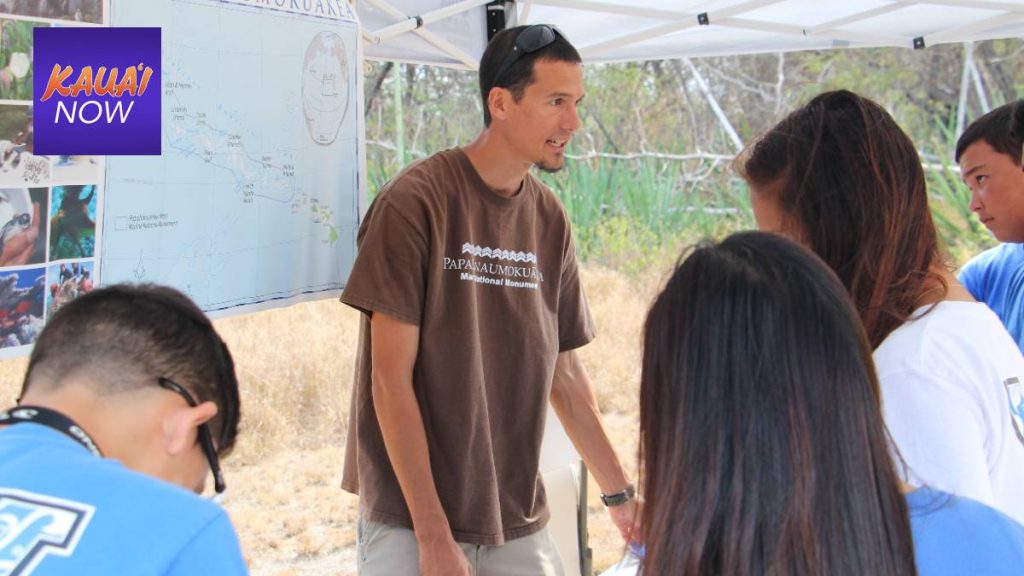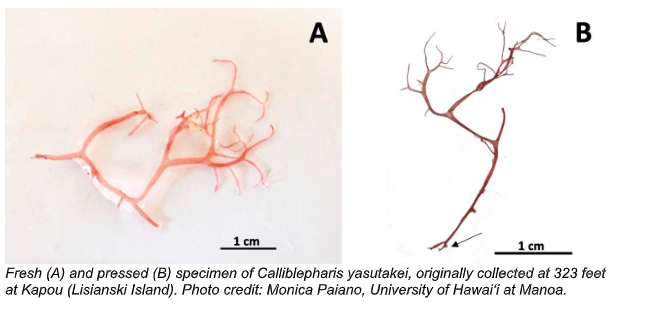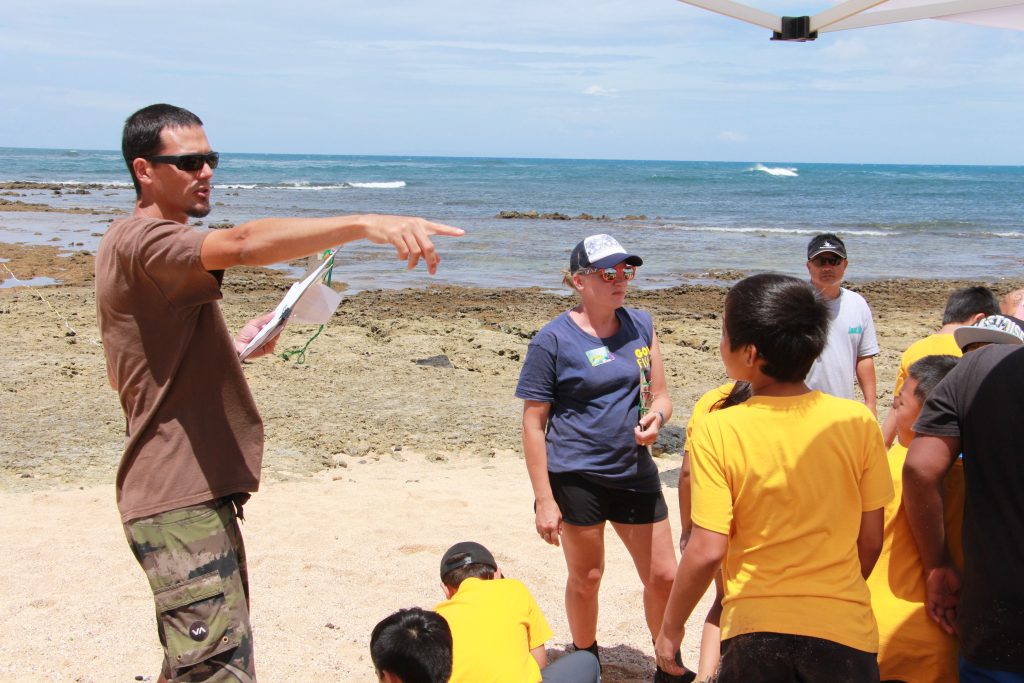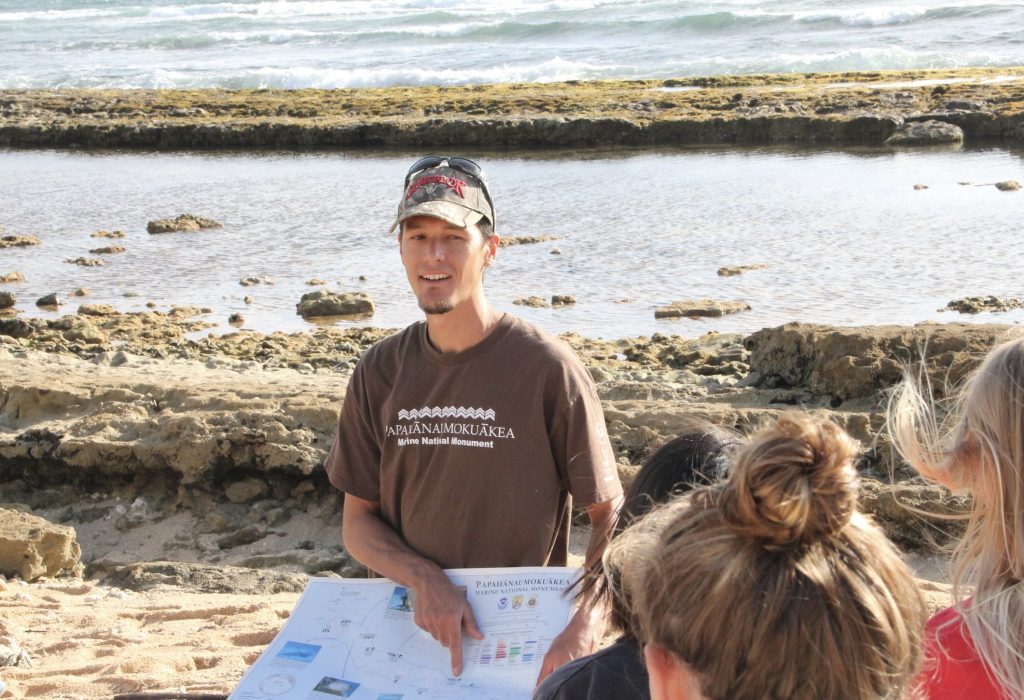New limu species from Papahānaumokuākea named after Kauaʻi scientist who died at 41
A team of scientists recently published the scientific description of a new species of red algae from Papahānaumokākea Marine National Monument in the Northwestern Hawaiian Islands.
The new alga, Calliblepharis yasutakei, was named after widely respected marine educator and scientist Yumi Yasutake, who passed away on April 30, 2021 on Kaua‘i at the age of 41.

The new species of algae, Calliblepharis yasutakei, was discovered by scientists using technical closed-circuit rebreathers to dive to extreme depths in excess of 300 feet. These deep coral reefs, or so-called Mesophotic Coral Ecosystems, are virtually unexplored, and host a wealth of undiscovered biodiversity.
“It’s wonderful to recognize someone who dedicated his life to educating Hawai‘i’s keiki about Papahānaumokuākea and the richness of our ocean resources. Yumi’s history, it’s an inspiration for me and I’m sure for all the keiki that had the pleasure to learn from him, ” said Dr. Monica Paiano, a University of Hawai‘i postdoctoral researcher, and Dr. Alison Sherwood, the lead author on the paper, said in a statement.
Yasutake was born and raised on Kaua‘i, graduated from Kapa‘a High School, and lived in the Wailua Homesteads. He received a degree in marine science from the University of Hawai‘i at Hilo, and worked for many years in Hilo at NOAA’s Mokupāpapa Discovery Center.
Mokupāpapa was established in 2003 to interpret the natural science, culture and history of the Northwestern Hawaiian Islands, encompassed by the Papahānaumokuākea Marine National Monument, and surrounding marine environment.
Virginia Branco, manager of the Mokupāpapa Discovery Center, worked with Yasutake in Hilo for many years.
“Yumi was the kindest, most humble person I’ve ever met,” she said. “He really poured his heart and soul into educating the young people of Hilo.”
Early in his career, Yasutake, a marine scientist by training who was a certified scientific diver, participated in a major National Oceanic and Atmospheric Administration research expedition to Papahānaumokuākea. The opportunity to witness first-hand the amazing biodiversity of a pristine Hawaiian marine ecosystem was a life-changing experience for him, and he dedicated the remainder of his career to sharing these wonders with Hawai‘i’s young people.
Yasutake eventually moved back to Kaua‘i to be closer to family, and he continued his career with NOAA by working with many community and school groups, and government agencies on his home island.
He also was a fisherman and farmer, and was instrumental in developing and coordinating the Hanalei Moon and Tide Calendar, pono fishing lessons, in-school aquaponic facilities and new teaching aids.
NOAA research ecologist Dr. Randy Kosaki, who also is a co-author on the paper, discovered the only known specimen of this species on a 323-foot dive at Kapou (Lisianski Island) in the Northwestern Hawaiian Islands.
“Given Yumi’s dedication to educating our community about this special place, it seems especially fitting that such a rare species from Papahānaumokuākea will now carry his name in perpetuity”, Kosaki said. “He was especially fond of teaching students how to make beautiful pressings of limu that they found on local beaches.”
The specimen of C. yasutakei is deposited in the Bishop Museum’s research collection, where it is available for study by marine scientists worldwide.
Yasutake is survived by his wife, Tami Keakaokalani Mo‘ikeha Yasutake, children Kaison and Myla Yasutake, parents, Leslie and Carol Yasutake; sister, Lachelle (Mark) Rodrigues; brother Kobi (Hannah) Yasutake, and numerous nieces and nephews.









